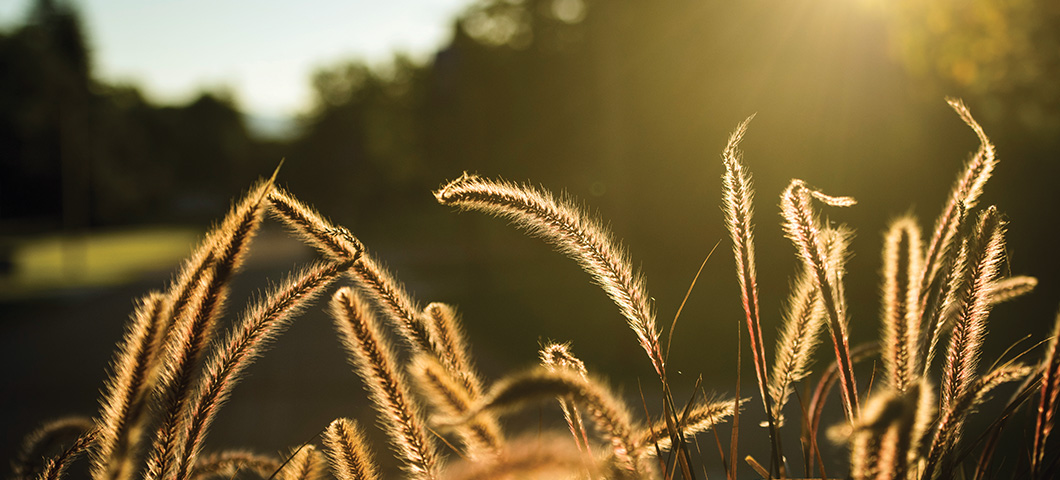Guide to Land Acknowledgements
Download a PDF version of this guide

Land acknowledgements are sincere statements, used by both Native and non-Native peoples, to recognize that present activities are taking place on the traditional homelands of Indigenous Peoples who have been dispossessed from these lands, are traditional stewards of these lands, and have an ongoing relationship with these lands. An authentic and sincere land acknowledgement conveys both an awareness of the injustices experienced by Indigenous Peoples and a commitment to the work of solidarity and ongoing relationship-building with them. Land acknowledgements are typically shared at the beginning of gatherings and events and are sometimes included in syllabi, websites and email signatures.
As more institutions have created official land acknowledgements, concern has risen that these statements are merely perfunctory and/or performative. Nonetheless, sincere land acknowledgements are important to the extent that they indicate and foster awareness of Indigenous presence and rights, teach listeners about the histories that produced present realities, and make visible the realities of colonialism as an ongoing process that variously situates all of us in uneven power relations. When done with integrity, land acknowledgements have the potential to undo erasure and positively transform all of our relations.
Thinking about Creating a Land Acknowledgement
- Evaluate the purpose of your land acknowledgement. Who is your audience? Why are you writing it? What is your intended outcome? Because land acknowledgements are so contextual, Montana State University does not have a single university-approved statement.
- Do your homework. Learn about the Indigenous Peoples and Nations who have inhabited and continue to inhabit the land you are on. Research the history of the land and any related treaties. The Native Land Digital website is a good resource. Understand the historical context, Indigenous cultural protocols and the current experiences of the people to whom you refer. Be aware of any competing Indigenous claims to specific areas and/or Indigenous Nations in other locations who may be stakeholders.
- Learn and use the correct pronunciation for tribes, places and individuals you are including. Check the Nation’s website as they may have a phonetic pronunciation on their “About” page or a recording that includes someone pronouncing the name.
- Get to know active local Indigenous communities.
Tips for Writing a Land Acknowledgement
- Consider using a past/present/future structure. There is no one template for land acknowledgements. One route is to start with those who have come before along with the deaths, dispossession and displacement they faced. Continue with attention to contemporary claims to the land. Conclude with actions you and others can take to support Indigenous Peoples and Nations in current and future efforts. If you don’t use this structure, be sure your statement attends to all three temporalities.
- Focus on honesty, sovereignty and respect. Tell the truth about prejudiced and destructive histories. Avoid watering down past injustices. Use accurate language such as: exploitation, subjugation, unceded territory and forced removal. Respect and affirm that Indigenous Peoples are still present and have claims to the land.
- Consider naming living people and/or current projects from Indigenous communities. Personalize and situate your event in relation to Indigenous community projects or interests. This illustrates an awareness of presence and actions of solidarity beyond land acknowledgements.
- Understand that the process of writing land acknowledgements is a dynamic, ongoing journey. Starting somewhere is better than not trying at all. The activities of naming and acknowledging are inherently pluralistic, and you will likely be corrected and/or challenged. If an acknowledgment is discomforting and triggers uncomfortable conversations (instead of self-congratulation), it is likely on the right track. Embrace humility, let your knowledge evolve, rewrite and/or start over. Consider asking a colleague or your department’s DEI committee to review your statement before sharing it.
Beyond Land Acknowledgements
A land acknowledgement is only a beginning step in the decolonizing process. Land acknowledgements become meaningful when they lead to action.
-
- Integrate recognition and respect for those you acknowledge into your everyday practices.
- Build meaningful partnerships. Embrace tribal consultation.
- Hire, include and consider the perspectives of Indigenous Peoples in your organizations.
Commit to Ongoing Learning about Land Acknowledgements and Indigenous Life
- Native Governance Center’s web site;Guide to Land Acknowledgments
- US Department of Arts and Culture "Honor Native Land" Project
- National Environmental Education Foundation’s Guide to Indigenous Land Acknowledgement
- Find and review as many examples of land acknowledgements as possible.For example, check out the University of Colorado statement.
- We Are All on Native Land: A Conversation about Land Acknowledgements
- High Country News article “Land-grab universities.”
- American Historical Association’s 2022 article on land acknowledgements
- Indian Country Today
- Why We Need to Reframe Why We Do Land Acknowledgements
- Beyond Land Acknowledgement in Settler Institutions
Special thanks to the MSU working group of faculty and staff who generously shared their time and knowledge to compile this guide: Walter Fleming, Matthew Herman, Lisa Perry, Christine Rogers Stanton and project lead Karen deVries.
